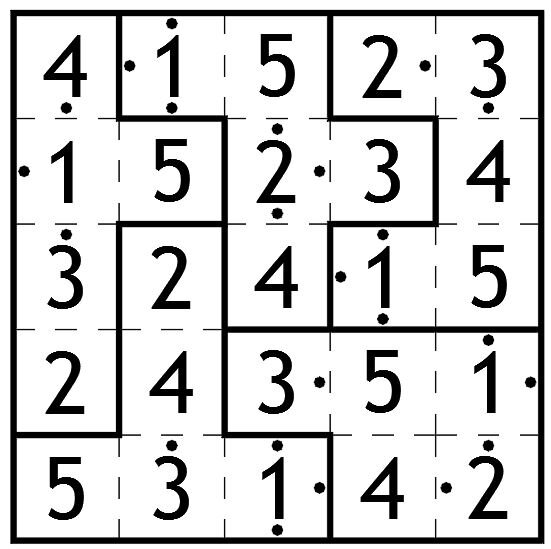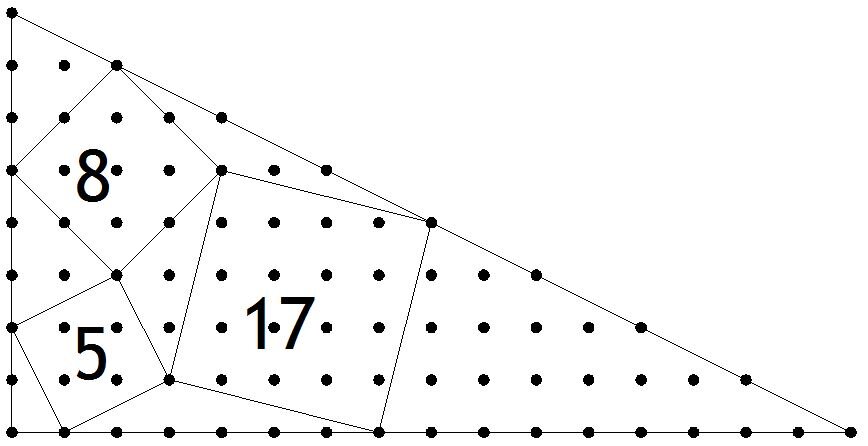First I used the dots around the edge to place the 1s in the top and bottom rows and first and last columns, allowing me to place some lines and find some places where there are definitely not lines.
Since there are no dots above or below the 1 in the first column, but there is a downward dot in the square above the 1, that square must contain a 3. This means the lower 5 squares of column 1 must be part of the same shape, along with one square from the second column. It must be the one in the second row as if there was a line separating it from column 1, then the dot tells us that square contains a 1, but it can’t as we already have a 1 in the second column. This completes the left hand shape and the dots now tell us exactly which numbers are where.
Similarly the third square on the top row must be a 3, one square from the second row must complete that shape. Since the squares in the third and fourth columns would lead to a second 1 in that shape, it must be the square in the fifth column. Using the dots and the numbers that have already been placed, the top shape can also now be fully filled in.
The two remaining 1s can now be placed. The 1 in the fifth column is interesting because the lack of dots tells us it is open on three sides. This effectively gives us the entire shape. We can place the 5 in this shape too, to complete the top row.
The dotted square in the fourth row cannot be a 1 as 1s are already present in that column and row. It also can’t be greater than 2 as there is a line in place 2 below it. It must therefore be a 2. The square two above it can only now be a 4. That and a 3 at the end of the second row complete that row.
The final two dotted squares are confirmed to contain a 2 and a 3 respectively. Through normal Sudoku rules the remaining numbers can be placed in the top right shape. We can therefore complete the last two columns.
Since there are two 2s in close proximity in the bottom right corner they must be in different shapes. The one on the bottom row must have lines above and to the right. The bottom right shape must extend a further square above the 3 on the bottom row, but cannot extend further in that direction as it would disrupt the 2 in the third column. We can therefore complete the lines of this shape, and now there is only one way to extend the middle shape without splitting the bottom shape into two pieces. All lines have now been placed.
The 3 and 5 in the third row can be placed since if it were the other way around there would be a dot in the 3 square. The 6 then completes this shape. This disambiguates the 5 and 6 in column four which means completing the second column is now straightforward.


















